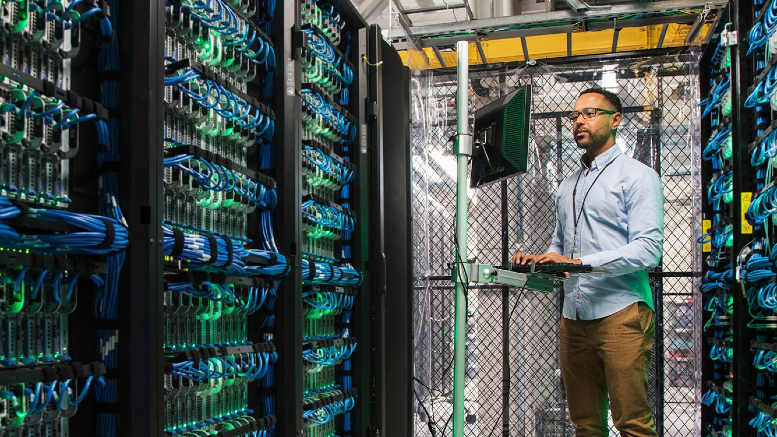Building an Agile Mindset: 7 Core Elements to Break Free from Business as Usual
August 11, 2022 / Madhukar Govindiah
As business paradigms evolve, new technology and methodologies are changing how corporate enterprises can be run. Transforming to keep pace with rapidly changing trends is becoming increasingly challenging. Leaders must carefully balance maintaining traditional business structures while embracing modernization through digital transformation.
Digital systems are as much about technology as the associated change in culture. Compelled by a need to modernize systems, initiatives primarily focus on upgrading technology. Largely ignored is the cultural shift required among the workforce to accelerate and catalyze the transformation towards business agility.
Agile practices have long taken over the technology industry as a way of life. Long duration, sequential plans with big-bang outcomes are conspicuously rare. Continuous, periodic outcomes — through tangible business benefits or improved end-user experience or availability of working software — are often seen as the better criteria for measuring progress.
But what does it take to achieve these ideals and become an agile business? Here are seven core elements.
Core Element 1: Strategy
Defining an organizational strategy is all about choices. Irrespective of the group or team, it begins with ideation/brainstorming to address a given problem or initiative. You can embed an agile mindset at this stage by doing the following:
- Define brainstorming rules upfront with clearly defined objectives and time-boxed outcomes.
- Ensure effective communication with all participants and adequate preparations before these workshops.
- Use a series of short workshops with a limited number of participants (four to eight) to progressively and iteratively move towards desired outcomes.
- Employ the “diverge before you converge” approach to maximize individual inputs and ideas before brainstorming and finalizing as a group.
- Use collaboration platforms to orchestrate seamless and rapid cycles of interaction.
- Define a concise business case (500 words or fewer) to articulate the finalized strategy clearly.
Visual collaboration tools can help establish and institutionalize a uniform brainstorming approach and offer a proven ability to facilitate all the above and more. A few easy-to-use yet powerful features that visual collaboration tools provide include:
- Integrated brainstorming templates aid in the running of workshops by helping define brainstorming rules, share information, seek input, rank ideas, embed reference links and more.
- Real-time timers allow parallel inputs from all participants over the same elapsed time interval.
- Offline inputs allow you to collect input from participants who could not participate in scheduled, in-person meetings.
Such a platform facilitates an integrated ideation exercise, leading to rich inputs from participants and a more robust solution to the problem or situation. Notice the shift from traditional methods to a more integrated, inclusive agile approach.
Core Element 2: Planning
Planning is all about the details — translating the strategy into implementable work units and activities. Planning the activities required to achieve the desired goal is critical to internalizing agility. Smaller chunks of work units, with measurable outcomes after each work unit, accelerate the shift towards agility. Critical success factors for this stage include:
- Make mind mapping an integral part of your planning exercises.
- Progressively elaborate your plan as and when you gather additional insights.
- Leverage short PDCA (Plan -> Do -> Check -> Act) cycles to continuously build work products instead of a big-bang approach.
- Define measurable outcomes at the end of each short cycle.
- Invest in a minimum viable product (MVP) or pilot to understand challenges upfront.
- Encourage bias towards prevention, rather than correction, by diligently inspecting and refining the work products at each sub-stage.
This approach instills short progress cycles with opportunities for continuous refinements. Continuous outcomes, early identification of challenges, reduction of rework and continuous improvement of end products are a few benefits of an agile approach to planning resulting in improved quality and faster, better outcomes.
Core Element 3: Execution
Execution involves completing the planned work units and activities to realize the desired outcomes from implementing a plan. Most activities come with boundaries of time and interdependencies. Therefore, how can you approach execution in a way that accelerates results and improves productivity?
- Check if reusable assets can accelerate progress instead of reinventing the wheel.
- Work in tandem, rather than insisting that all dependent tasks be completed before starting an activity.
- Accommodate iterations across activities to allow overall alignment, even if it means cycles of progressive fine-tuning and refinement of your work product.
- Emphasize improving the overall quality of the work product rather than minimizing work cycles.
Iterating over activities and adding short work cycles typically improves end outcomes. Doing so shifts the focus from completing activities to improving the quality of deliverables — an accurate indicator of internalized, intrinsic quality and commitment to desired outcomes.
Core Element 4: Governance
Governance helps assure you are monitoring activities, determining if alternate actions are needed, implementing the determined measures, and ensuring they result in desired outcomes. Monitoring is an ongoing activity. You can ensure ongoing alignment with your end goal by judiciously fine-tuning and refining monitoring parameters. Be sure to:
- Establish calendarized but flexible governance checks at short intervals (two to four weeks) with defined expectations and outcomes.
- Follow a zero-distance approach internally to ensure the reviewers or approvers are aligned with actual expectations.
- Focus on metrics and KPIs to make data-driven decisions.
- Focus on critical parameters, such as cost, quality and schedule — known as the triple constraints in project management.
- Review the team’s speed or velocity to adjust and maximize available bandwidth.
Governance is more about finding collaborative answers to align with the end outcomes and less about questioning and finding fault. A proactive, committed governance approach goes a long way in ensuring agility. Contrast this approach with the risky status report-driven approach with primarily qualitative narratives of progress.
Core Element 5: Validation
Validation confirms if the actual outcomes are aligned with the desired outcomes. Having a robust mechanism to validate completion at granular activity levels and rolled-up milestone levels is integral to assessing outcomes accurately. To do so:
- Ensure you have a good “Definition of Done” criteria for all activities and milestones.
- Have an integrated validation mechanism as part of the overall plan.
- Bring end-user or client-centric perspectives into the validation mechanism.
- Involve the right stakeholders, including end-users, during the review and validation cycles.
- Have a well-defined mechanism or tool to report, track, triage and manage all observations and issues.
- Review the end product through demos, reports or presentations to validate work completion.
An integrated, uniformly applied and communicated validation approach eliminates subjective interpretation of progress, especially closer to completion. Effective validation using well-defined criteria increases the probability of successful outcomes.
Core Element 6: Empowered Leadership
Central to empowered leadership is inclusion — enabling a collaborative work culture. The ability to self-manage is a critical aspect of agility leading to more owners than doers. Involvement, ownership and accountability are accelerated by having a clear understanding of the big picture, collaborative and participative decision-making, and a general sense of inclusion throughout the journey. Be sure to:
- Establish a culture that involves the team in the entire journey rather than simply handing down responsibilities.
- Seek inputs and ideas from the team while making decisions.
- Encourage people to self-direct and manage activities, deliverables and outcomes with little or no supervision.
- Avoid the temptation to align to pre-defined norms and precedents, even if it reduces the probability of eventual outcomes.
- Challenge existing systems and the status quo.
- Engage in courteous confrontations internally and externally with peers, reviewers, approvers, leaders or partners.
- Acknowledge accomplishments, individually and collectively.
This approach shifts from centralized command and control to collaborative leadership and decision-making, which leads to improved inclusion, involvement, responsibility and accountability. In addition, it frees up bandwidth for leaders to focus on more strategic and impactful activities instead of micro-managing individual activities.
Core Element 7: Retrospection
Lessons learned are an integral element for continuous improvements. They are critical experiential and reusable assets that can help the subsequent phases of the current initiative and other initiatives across the enterprise. To ensure your organization does not overlook this critical step, be sure to:
- Build in a step for reflection at the end of every key milestone.
- Identify and harness reusable assets at the end of every key milestone.
- Create a centralized repository for findings and reusable assets, easily accessible by all.
- Track continuous improvements resulting from lessons learned from previous initiatives.
A retrospective is a powerful mechanism for learning. Centralizing your findings can allow you to integrate your collective wisdom across the enterprise, reducing the likelihood of operating in self-defined silos.
In summary, internalizing and institutionalizing an agile mindset goes beyond customary adherence to agile practices as an engineering methodology. An agile business needs to make the necessary shifts culturally, moving away from traditional comfort zones and styles of working. Key business benefits include increased productivity, improved quality, decreased cost and enhanced end-user satisfaction.
An agile mindset has the potential to make the whole journey more enjoyable and collaborative, significantly improving individual involvement and commitment to the desired outcomes — an intangible result and a dream target state for any enterprise.
Unisys maintains a firm commitment and conscious drive to internalize and institutionalize an agile mindset through unified tools, design thinking, cross-geography collaboration, a participatory and collaborative culture, and pre-defined yet customizable activities aligned with iterative progress. We have a vital feedback and retrospectives culture, enabling us to recognize gaps, fine-tune and continuously improve our approaches, internal systems and decision-making. Our business strategy and behavior are modeled around a firm focus on client-first thinking. We are a Scaled Agile Gold partner in the SAFe® Program Consultant Trainer (SPCT) certification program and have applied our agile mindset to help enterprises worldwide achieve successful business outcomes.



















